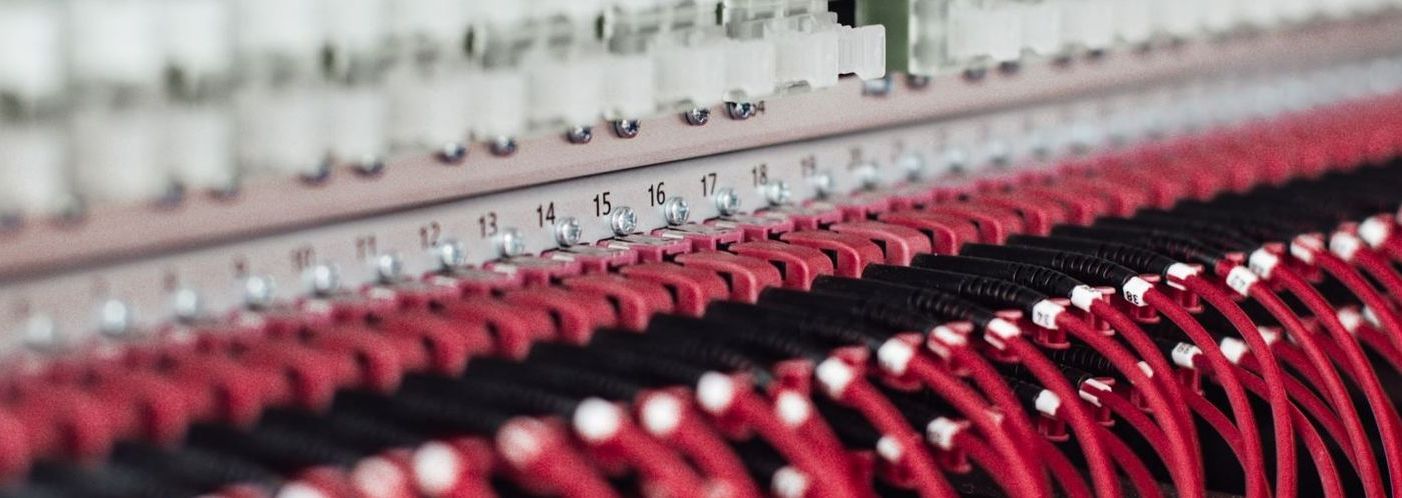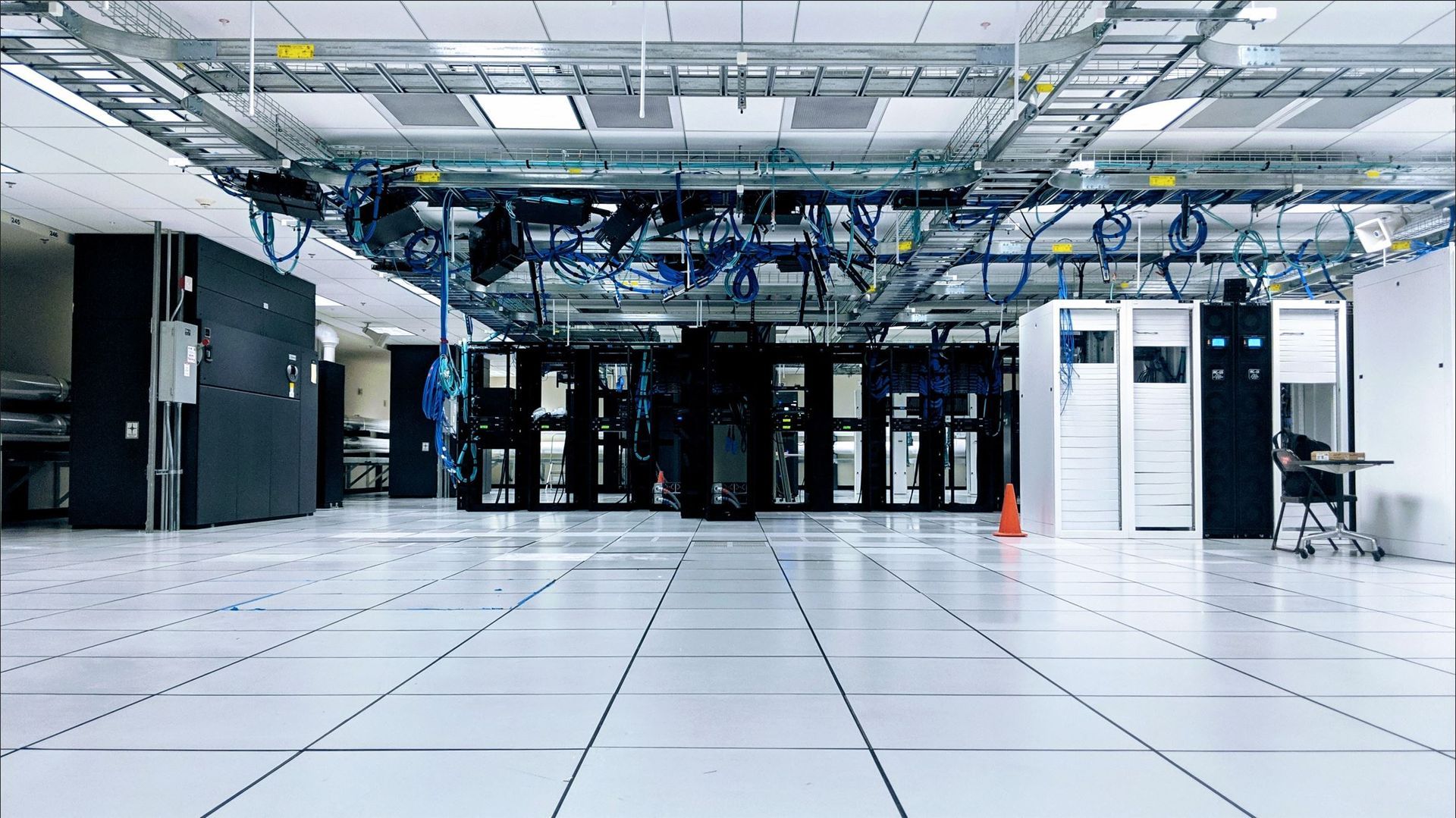IT Networks: A Comprehensive Overview For Firms
Everything You Need To Know About Cat Cables, Network Switches, Patch Panels, Intranets, Firewalls, and WAPs

This post has been slightly adapted to a blog post from an APA paper written by the author. Download the APA paper here!
Executive Summary ~1 min
This blog post offers a thorough overview of IT Networks for firms, outlining key components that include Category (Cat) Cables, Network Switches, Patch Panels, Intranets, Firewalls, and Wireless Access Points (WAP).
Cat Cables, the cornerstone of any networking solution, have evolved over time. While older cables like Cat-3, Cat-5, and Cat-5e have become obsolete due to their limited data transmission capabilities, modern cables like Cat-6, Cat-6a, Cat-7, and Cat-8 offer higher speeds (from 1 to 40 Gbps). The choice of cable should be based on the firm's data demands, future-proofing considerations, and budget.
Network Switches and Patch Panels are integral for connecting multiple devices to the internet and for organizing network cables. It's vital that these components are matched to the chosen Cat Cable's speed to avoid network bottlenecks.
Intranets serve as secure internal networks, providing crucial business resources, collaboration tools, and operations systems. Access to the intranet is securely restricted to users either being on the network or through a Virtual Private Network (VPN).
Firewalls are critical for data and network security. They regulate traffic based on white-listing or black-listing of URLs and IP addresses, providing protection from potential threats.
Finally, Wireless Access Points (WAPs) convert wired internet connections to wireless, offering wider connectivity for mobile devices within a firm's office space. Newer standards like WiFi 6 support mesh networks that auto-distribute devices between 2.4 GHz and 5 GHz frequencies, ensuring optimal connectivity at all times.
Firms considering an IT Network overhaul or setup should choose Cat-6 or newer cables, ensure compatibility between cables, switches, and panels, establish a secure intranet, implement robust firewalls, and optimize wireless access via WAPs for a seamless, reliable, and secure network experience.
Introduction: IT Networks: A Comprehensive Overview For Firms
IT Networks are an important part of any organization in the modern world. From which category of cable your firm needs to use to how wireless networking should be executed for a seamless user experience. Every aspect needs to be carefully considered. In this paper, we will cover which category of cables your firm should use for networking, network switches and patch panels to connect all of your workstations, what an intranet is and how it is used as part of your local area network, the importance of firewalls and how they can be set up to protect your firm and its data, and wireless access points to connect all of your firm’s devices to the network seamlessly.
As a point of clarification, in the Information Technology space, there are many ways to measure data and data rates, such as Megabits (Mb), MegaBytes (MB), and MebiBytes (MiB). Software is coded and stored in bits, which is a single 1 or 0 in binary; eight 1s or 0s create a byte, and 1,024 of these bytes, or 8,192 bits, create a Kibibyte. In an effort to allow for easy comparison and conversion, this paper will measure everything in either Kilobits (Kb), which are 1,000 bits, Megabits (Mb), which are 1,000 Kb, or Gigabits (Gb), which are 1,000 Mb.
Key Components of an IT Network
Category (Cat) Cables
Category Cables, also known as Cat Cables, are the backbone of any networking solution, whether it be for communication among the intranet or for connecting your firm to the internet. Cat cables vary in speed and capabilities when it comes to data transmission rates, making it important to understand the differences between them when looking to install them. Speeds below are measured in Mbps (Megabits per second) for Cat-3, Cat-5, and Cat-5e, and speeds for Cat-6, Cat-6a, Cat-7, and Cat-8 are measured in Gbps (Gigabits per second) measured with a 100-meter-long cat cable. Though there is a difference in speeds for each type of cat cable, there is a similar limit in length for all of them. This physical length limit is around 100 meters (~328 feet) before there is a need for an active repeater that takes the incoming signal and repeats it to another cat cable, sending it up to another 100 meters. This length limit can be extended greatly through the use of Optical Fiber, which uses light to send data back and forth.
Starting with cables that have become obsolete due to their relatively low data speeds and are recognized by the Telecommunications Industry Association (TIA) as conforming to their standards, are Cat-3, Cat-5, and Cat-5e cables (Poole, 2022). Cat-3 cables are cables that have become obsolete due to their slow data rate, only being capable of 10 Mbps, which would become largely saturated with watching a single compressed 1080p video. Use of Cat-3 as an intranet or internet connection solution would leave users feeling its slow speed, as they would find themselves waiting around for things to load with the Cat-3 cable being the bottleneck.
Cat-5 cables are the cables that supersede Cat-3, and are capable of much faster speeds of up to 100 Mbps (Poole, 2022). Cat-5 will once again be the bottleneck, hindering users from using their hardware to the maximum, as even a slow 5400 rpm hard drive can write faster than the Cat-5 cable can supply data to the system. Cat-5e stands for Cat-5 enhanced, and while it is physically the same as Cat-5, it is tested to run at a slightly higher data rate of 125Mbps (Poole, 2022). While the increased speed is beneficial, it will still result in users becoming bottlenecked by the cables, even with the aforementioned 5,400 rpm hard drive, as this will only be enough to provide the drive with around its maximum sequential write speed, and nothing more. With this setup, a user would not have a seamless experience downloading data from the intranet to their local device in the background while trying to browse the web at the same time.
Modern cat cables conforming to TIA standards, such as Cat-6, Cat-6a, Cat-7, and Cat-8 cables range in speeds from 1 Gbps (1,000 Mbps) to 40 Gbps (40,000 Mbps). Cat-6 cables offer a substantial improvement over Cat-5e cables, as their base speed is 1 Gbps, allowing for multi-tasking by a user, mitigating the chances of the cat cable being the bottleneck. Cat-6 is perfect for organizations that do not rely on power user activities that use a lot of data, such as video editing, or users that require a lot of downloading at high speeds from the internet or intranet onto their SATA or PCIe solid state drive. Cat-6a is capable of double the speed at 100 meters that Cat-6 is capable of and requires shielding as part of the standard, making the cable less flexible and may not be able to go to all of the places Cat-6 can because of this (Poole, 2022).
For firms that want to future-proof, as re-cabling an entire building for new networking is typically not done often, Cat-7 offers the best of both worlds, being less costly than Cat-8 but offering much more speed than Cat-6 and Cat-6a. Cat-7 offers speeds of 10 Gbps, which is enough to handle 2160p (4K) raw video and almost enough for uninterrupted 4320p (8K) raw video for workloads such as local video editing off of a SAN or NAS. For firms that do not ever want to think about re-running cables through their building and are willing to spend some extra money up-front for this peace of mind, Cat-8 cables are what they should be considering. Cat-8.1 offers speeds of 25 Gbps, and Cat-8.2 offers speeds of 40 Gbps (Poole, 2022) which should be enough data flow for almost any workload, even the most powerful of power users, for the foreseeable future.
Network Switches and Patch Panels
Patch Panels are used to connect all incoming cat cables coming from workstations around your building. This creates a Local Area Network (LAN) between your devices and allows for the use of internal secure remote access to servers and Network Attached Storage (NAS) devices. Patch panels are a must for every firm, as this allows you to easily organize and connect all the networking cables that are routed to your server room. Without a rack-mounted solution such as a patch panel, wires are likely to get tangled and could get damaged or unplugged because of their lack of organization.
Network switches are used to connect multiple devices to the internet. Since there is a physical limitation of a wireless access point as to how many cables can be connected to it, a network switch is crucial in connecting large amounts of wired connections to internet access. Firms must be careful as to which network switches and patch panels they use, as they are all rated for up to a specific speed. For a firm that invests in all new Cat-8.2 cable, capable of speeds of 40 Gbps, if a network switch or patch panel that is only capable of 1 Gbps is used, this creates a large bottleneck, as all data routed through the switch will be capped at this slower speed of 1 Gbps, not the maximum 40 Gbps. It is important to not only look at speeds when it comes to cabling but to match then the types and speeds of cables used with the speed that a switch is capable of in order to maximize the utilization of a network (Edwards & Seifert, 2013).
Intranet
An intranet is a self-contained network that is typically behind a firewall and password protected. Many company intranets contain key information, such as Berta reports about a restaurant chain’s intranet containing “access to orientation and training materials, marketing programs and materials, order forms and direct links to key vendors” (2001). Intranets can vary from firm to firm, containing things such as data storage, servers that complete various tasks, collaboration tools, and operations systems. Key factors of this include access within the Local Area Network (LAN), making it more secure as users have to either be on the network or connected to the network through the use of a Virtual Private Network (VPN).
Firewall
A firewall is one of the most important aspects for a firm that needs to keep its operations and data private and secure. It blocks incoming and outgoing traffic that may harm the network, users, or simply distract employees from working. Firewalls typically rely and operate on two distinct systems: IP and domain whitelisting and blacklisting. A whitelist-based firewall holds a list of website URLs and IP addresses that are allowed to be accessed and allows communication with these outside entities as long as they are on the approved list; those that are not are completely blocked, and no communication occurs between the network and this outside entity. Blacklist-based firewalls store a list of URLs and IP addresses similar to a whitelist-based firewall solution, but instead, the default is to allow connections between the network and outside entities. If a URL or IP address is trying to communicate with the network that is on the blacklist, it is immediately blocked by the firewall, protecting the network from some type of harm.
Wireless Access Points (WAP)
Wireless access points convert your wired internet connection to wireless through the form of WiFi. The two major types of WiFi rely on the two main different wireless frequencies used, which are 2.4 GHz, and 5 GHz. 2.4 GHz is the older, more widely used wireless frequency, which allows it to be seen by more devices that may come across it. 5 GHz is a newer standard that is typically only seen by newer devices that know to even look for it.
With new standards such as WiFi 6 supporting mesh networks that automatically distribute devices to both 2.4 GHz and 5 GHz depending on the compatibility and needs of the device and network (Intel, 2021), it is now easier than ever for firms to set up wireless connectivity through the use of wireless access points. A mesh wireless network is when an array of WAPs are set up in order to provide connectivity to devices throughout a larger area, seamlessly switching the device through software from one WAP to another as the device moves around the area, providing the strongest and fastest possible connection at all times.
Conclusion and Recommendations for Firms
For firms who are looking at completely overhauling or are looking to set up an IT Network for the first time, it is recommended that they go with Cat-6 or newer networking cables depending on their budget, as those with a bigger budget would benefit from some future-proofing with Cat-7’s greatly increased transmission speed. Bringing all of these cables into the server room, they would then be able to connect all of the devices using patch panels and network switches, creating an intranet with their workstations, servers, and network attached storage allowing easy access to local employees who need access to firm data and resources.
In order to protect themselves, their users, and the data stored in their servers, firms will want to set up a firewall that will be able to protect them optimally a white-list style firewall will be put into place, blocking any unapproved and listed outside connections, but for firms where users need access to many changing outside resources, a black-list style firewall will most likely be implemented. In order to ensure connectivity among all of the firm’s devices, including mobile devices in the building, wireless access points will be installed around the building in a mesh wireless network setup. Which will allow users to walk freely throughout the building, seamlessly switching between wireless access points to ensure a strong, fast, and reliable connection.
Thank you for reading my blog post! If you found any of this information helpful or know someone who would find it useful, please share it with them. Let me know what you think in the comments below. Consider joining my mailing list to keep learning as I continue to add value with more blog posts and articles about topics such as Information Technology Management and Marketing.
Once again:
This post has been slightly adapted from an APA paper to a blog post written by the author.
Download the APA paper here!









